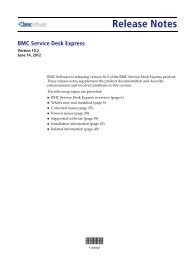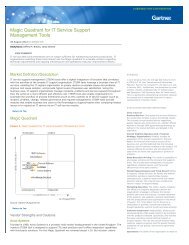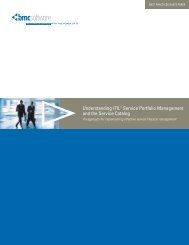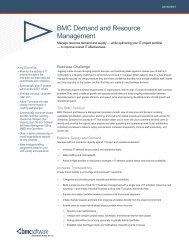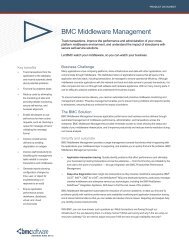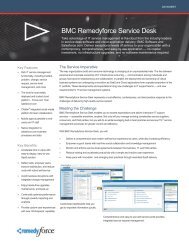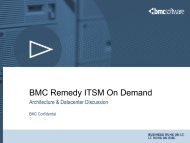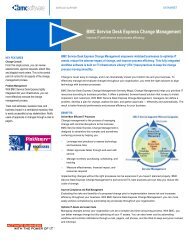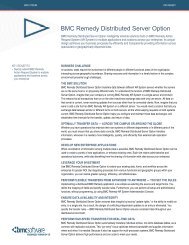Step-by-Step Guide toBuilding a CMDB - RightStar
Step-by-Step Guide toBuilding a CMDB - RightStar
Step-by-Step Guide toBuilding a CMDB - RightStar
You also want an ePaper? Increase the reach of your titles
YUMPU automatically turns print PDFs into web optimized ePapers that Google loves.
Stage 1. Assemble the Project Team and Define the Project<br />
Task-<strong>by</strong>-Task <strong>Guide</strong><br />
Figure 4.1 shows the tasks for reviewing and defining the benefits of the <strong>CMDB</strong>.<br />
Task 1.<br />
Research<br />
Potential Benefits<br />
Task 2.<br />
Link Specific<br />
Benefits to<br />
Project Goals<br />
Task 3.<br />
Review and Refine<br />
Benefits with<br />
Key Stakeholders<br />
Figure 4.1. Tasks for reviewing and defining the benefits of the <strong>CMDB</strong><br />
Task 1. Research Potential Benefits<br />
A <strong>CMDB</strong> can create a broad range of potential benefits. Knowing the potential benefits will help<br />
the <strong>CMDB</strong> project team identify the specific benefits of the <strong>CMDB</strong> project in your organization<br />
as you work with key stakeholders in various IT functions. You need to understand how the<br />
<strong>CMDB</strong> changes and improves organizational practices, so that you can articulate the benefits<br />
of a <strong>CMDB</strong> as they relate to your specific goals.<br />
In general, the benefits of a <strong>CMDB</strong> are related to better access to information. The <strong>CMDB</strong> helps<br />
consolidate and federate data that previously was distributed across the IT organization. Through<br />
a federated <strong>CMDB</strong>, the project will connect those who consume information with those who<br />
produce the information.<br />
The <strong>CMDB</strong> also helps improve data accuracy. The ongoing collection, reconciliation, and maintenance<br />
of CI data make the data dependable and usable. Putting supporting processes in place<br />
is mandatory. Identifying owners of specific types of CI data also helps. Finally, a federated <strong>CMDB</strong><br />
can provide information to improve existing processes and also enable new capabilities that<br />
were not previously possible with disparate data stores.<br />
To understand the potential benefits of a <strong>CMDB</strong>, you should research various sources of general<br />
information about how a <strong>CMDB</strong> enhances IT processes. Consider hard and soft benefits for each<br />
process. The following summary describes the potential benefits you can expect from a <strong>CMDB</strong>.<br />
Incident management. The <strong>CMDB</strong> provides a rich source of information that you can use to<br />
turbocharge incident management. Incident managers can quickly access CI status, determine<br />
impact <strong>by</strong> reviewing the relationships between CIs and the business applications they support,<br />
and identify related CIs to restore service. <strong>CMDB</strong> data can automatically populate incident records.<br />
Also, the ability to roll back to a known good configuration baseline enables an effective service<br />
restoration strategy.<br />
»»<br />
Potential hard benefits: Higher first-fix rate, less time and aggravation asking questions to<br />
assess the situation with the impacted user, reduced mean time to restore, lower incident<br />
management training costs<br />
»»<br />
Potential soft benefits: Improved customer satisfaction because you can avoid asking them<br />
questions about the configuration of their system and you can provide faster response time,<br />
improved service-personnel morale, and improved business perception of IT at a key<br />
interface point with business users<br />
28



